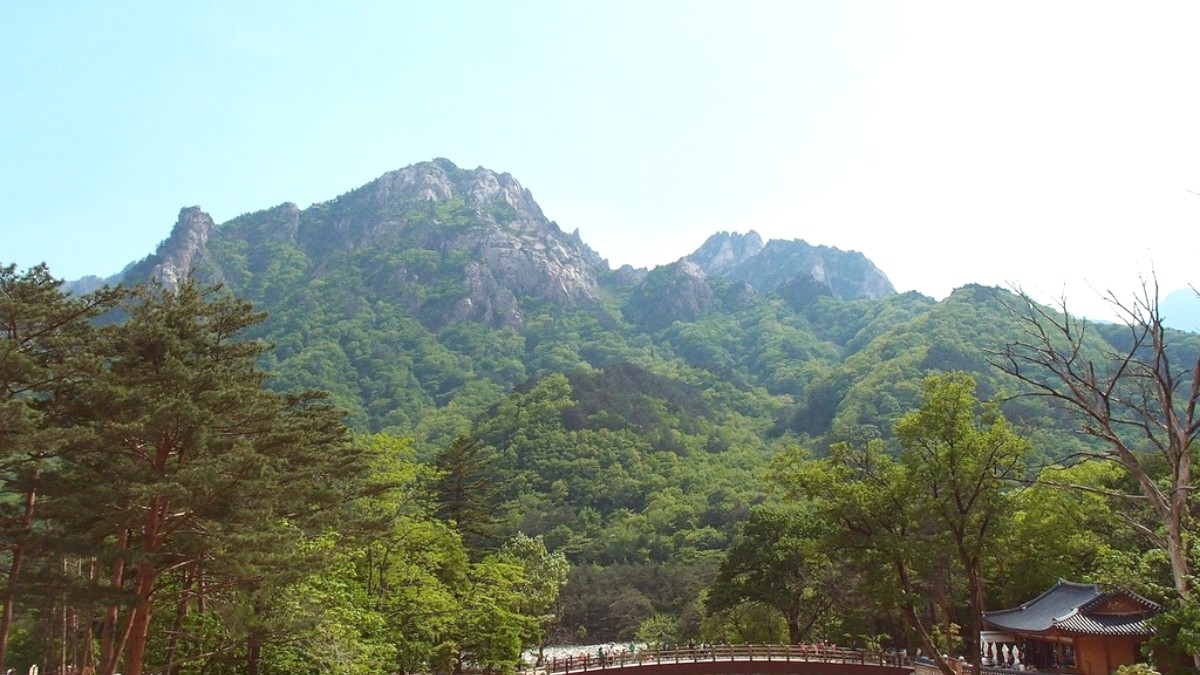
Gang Won Do, South Korea
No major archaeological sites or ruins exist directly within Seoraksan National Park beyond the Gwongeumseong Fortress site.
Gwongeumseong Fortress, while ancient, mainly offers views and limited structural ruins, mainly valued for its strategic location and panoramas.
These sites offer glimpses into traditional Korean design and living.
At Sinheungsa Temple, a symbolic monument for Korean reunification, reflecting a deep national aspiration.
A significant site north of Sokcho offering a view into North Korea, important for understanding the Korean War and peninsula division.
Within the Unification Observatory complex, it houses artifacts and displays related to the conflict.
The surrounding area of the Unification Observatory is part of the Civilian Control Zone, offering a direct view of the border.
Smaller markers and monuments commemorating historical events are found throughout the region.
Seoraksan National Park is a treasure trove of natural beauty, with diverse landscapes from rugged peaks to serene lakes.
The main natural attraction, divided into Outer Seorak (accessible from Sokcho) and Inner Seorak.
A large lagoon in Sokcho city, featuring a pleasant promenade and the Expo Tower.
Another scenic lake in Sokcho, offering cycling and walking paths around its perimeter.
A popular sandy beach for swimming and relaxation during the summer months.
The coast offers stunning sunrises, a memorable experience for early risers.
Numerous smaller, less crowded beaches dot the East Coast for quiet escapes.
Iconic peaks like Ulsanbawi Rock offer challenging hikes and rewarding views. Gwongeumseong Fortress Peak is accessible by cable car with panoramic views.
Biryong Falls and Towangseong Falls present impressive waterfalls demonstrating the park's dynamic waterways. Heundeulbawi (Shaking Rock) and Geumganggul Cave are unique geological features.
Seoraksan National Park hosts diverse wildlife (Siberian flying squirrels, Korean gorals, over 1,000 plant species). Granite peaks and deep valleys characterize the park's geology.
The region presents insights into modern Korean history, especially related to the division of the peninsula.
Discover the rich cultural heritage of the Seoraksan area through various experiences.
While extensive formal workshops are limited, engagement with local life and observation of traditional practices deepen your understanding.
Formal workshops in art, craft, music, or dance are limited in Seoraksan and Sokcho, mainly found in larger cities.
Immerse yourself in local celebrations and prepare for interactions with basic Korean phrases.
No formal language learning opportunities are available for tourists in Seoraksan, but basic Korean phrases help for daily interactions.
Engaging with local communities offers unique cultural insights and direct support.
Beyond the popular spots, Seoraksan and Sokcho hold lesser-known treasures that reveal unique experiences.
Jujeongol Valley (Osaek area) offers picturesque scenery. Sokcho Lighthouse Observatory and Yeonggeumjeong provide unique coastal views.
Explore side streets of Sokcho Jungang Market beyond main tourist areas. Visit local fishing villages for insight into daily life.
Goseong (north of Sokcho) offers pristine beaches and quiet villages. Inje (west of Seoraksan) has rugged mountains and white-water rafting.
Capture the stunning sunrise from Sokcho Beach or Yeonggeumjeong for a memorable visual experience.
Photograph the reflections of Seoraksan peaks in the calm waters of Cheongchoho Lake, especially on clear days.
Document the unique structures and narrow alleys of Abai Village, which narrate a compelling historical story.
Capture the fall foliage or snow-covered winter landscapes in Seoraksan for striking seasonal photos.
Focus on the dynamic beauty of Biryong Falls or the majestic Ulsanbawi Rock for dramatic nature shots.
Support local communities and practice responsible tourism through mindful shopping choices.
Plan for sending items home and be aware of regulations for bringing goods into your home country.
This approach supports local businesses and fosters cultural exchange.
Seoraksan offers different charms throughout the year, with varying accessibility and activities.
Witness the park's changing beauty with distinct seasonal highlights.
Local festivals and specific foods mark the changing seasons.
While some areas are accessible, Seoraksan's mountainous terrain poses challenges.
Plan routes carefully based on mobility. Consult the park visitor center for detailed trail conditions.
Sokcho and its immediate surroundings are well-served by local buses, while intercity buses connect to other regions.
For further destinations like Gangneung or Inje, intercity buses are the main mode of transport.
Visitor centers are valuable resources for up-to-date information, maps, and assistance.
Staff are often able to assist in English and other languages.
Warm and humid with occasional heavy rains. Pack light clothing, rain gear, and hydration.
Cool, dry, and sunny. Ideal for hiking and foliage. Layered clothing is recommended.
Cold with snow, especially in mountains. Warm, waterproof clothing, and appropriate footwear are essential.